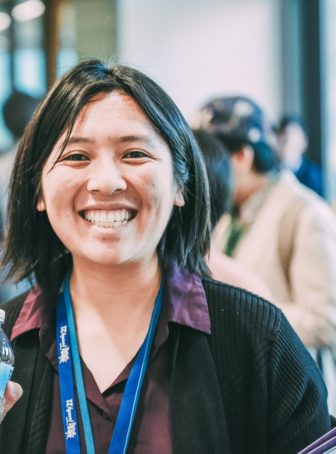
DGLimages/Shutterstock
.
After-school hours are fertile grounds for juvenile delinquency and problem behaviors. The persistent finding that juvenile violent crime peaks between 3 p.m. and 6 p.m. on the weekdays points out the importance of how youth spend their time after school. Adolescents who spent after-school hours with adult supervision reported better behavioral outcomes, such as fewer delinquent behaviors, more favorable school performance and attitude, and higher positive aspirations, than those without adult supervision.
However, a survey of more than 13,000 households conducted by the Afterschool Alliance showed that one in five children were unsupervised for more than seven hours per week.
The same survey showed that, although the demand for after-school programs exceeded 40 percent of the surveyed households, less than 20 percent of children were enrolled in an after-school program. This unmet demand is further complicated by mixed results on the impact of after-school programs. For example, a national evaluation of 21st Century Community Learning Centers concluded that sometimes programs’ participants showed fewer negatives behaviors than the comparison groups, but other times the two groups did not differ significantly from each other. What can explain these mixed results?
Competing views

Diane Hsieh
Control theory suggests that the structured nature of after-school programs could prevent delinquency by keeping youth off the street and in a supervised environment. Especially for neighborhoods that are dangerous for youth to be outside in, after-school programs can serve as a safe haven. This theory is likely true if youth’s alternative is unsupervised time. In other words, we would expect the benefit of after-school program participation to be most pronounced for students whose primary alternative is to be unstructured and unsupervised, either alone or hanging out with friends.
In addition to preventing risky encounters, after-school programs also have the potential to promote positive youth developments such as leadership, work habits and social-emotional skills. After-school programs could be examined as a space to leverage resources from communities, families and schools to not only reinforce learning, but also promote skills that cannot be learned in the school setting.
But there is some evidence that after-school programs can sometimes encourage problem behaviors. In some programs, youth are exposed to negative influencers, such as delinquent youth and problematic peer cultures. Even delinquency prevention programs can sometimes have unintended negative consequences, for example, when deviant youth reinforce (e.g., laugh at, cheer) or even try to “one-up” each other’s delinquent behaviors. Relatedly, after-school programs could foster unhealthy peer cultures, such as substance or underage alcohol use.
One example that has resulted in public concern is the finding that high school athletes, particularly those in highly competitive climates, are more likely to drink alcohol than nonathletes. If we take a closer look at this issue, however, we conclude that is no reason to discourage youth in sports participation after school. Recent meta-analyses that aggregate existing studies (i.e., including a wide range of sports program participation instead of just the highly competitive ones like varsity) do not point to one clear association between after-school sports participation and substance use or overall delinquent behaviors, including petty crimes. In other words, there are plenty of successful sports programs that managed to offset the otherwise expected increase in alcohol use or other delinquent behaviors.
How to increase the likelihood of positive outcomes and decrease the likelihood of negative outcomes? Taken together, after-school programs are not a fail-safe solution to prevent youth delinquency during after-school hours, but rather a complicated remedy. How can the accumulation of literature inform practitioners?
Some promising practices

Sandra Simpkins
One of the most promising practices is structured programing. Concrete exemplar aspects of structured programing include setting a predictable schedule, working toward developmentally appropriate and explicit learning goals, and employing interest-based hands-on activities. The reasoning behind structured programing is to replace risky habits with healthy routines that occupy students with constructive and engaging activities.
Another program characteristic often associated with favorable outcomes is high staff-to-student ratio. For example, an evaluation of 35 after-school programs in Maryland suggested that an increase in the number of participants was associated with increased delinquency even after holding constant other significant program characteristic predictors of delinquency, such as program curriculum and staff education level.
Related to providing students with more adult attention in after-school programs is the impact of staff quality. Research has pointed out the positive effects of not only more experienced and educated staff, but also staff who establish better relationships (e.g., Developmental Relationship Framework) with students. Another aspect of staff quality is being responsive to the diverse and rich cultural resources that students bring into the program. For example, tailoring activities so that students feel more connected to the content and empowered to exercise what they already know about their communities.
It would be naïve to not talk about the other contexts that students are simultaneously embedded in other than after-school programs. After-school programs are encouraged to leverage school, families and communities, etc. as partners. A concrete example of community partnership would be bringing in local leaders as mentors and role models for the students (e.g., “Team Kids”).
Lastly, research has shown that more at-risk participants drop out of after-school programs compared to those considered not at-risk. Hence, mechanisms to increase retention, such as providing transportation and nutritious snacks, and outreach to participants who have left, are encouraged. Similar reasoning goes for recruitment too. After-school program participation is often a self-selected process (instead of random assignment). If programs aim to serve a diverse range of students, it might be helpful to analyze not only who they are currently serving, but also who they fail to access.
It’s important to understand that the relation between after-school program participation and adolescent delinquency could go in both directions. Also, both after-school programs and adolescent delinquency are umbrella terms. Nonetheless, the field has come a long way to uncover different types of after-school program participation in predicting various measures of behavioral outcomes.
Generally, more empirical evidence showed after-school programs as a space to reduce delinquent behaviors or that the associations between after-school program participation and delinquent behaviors were not significant, suggesting more reasons to encourage than to discontinue after-school programming. (Go here for a cost-effectiveness narrative). As the field is increasingly encouraging evidence-based practices, it would be exciting to see more collaboration between program practitioners and researchers in analyzing grounded and robust data to answer the association between after-school program participation and delinquent behaviors.
Diane (Ta-yang) Hsieh is a third-year Ph.D. student in the University of California, Irvine School of Education. She is interested in the social and cultural factors of adolescent development, such as family practices, after-school activities and cultural stereotypes.
Dr. Sandra Simpkins is a faculty member of the University of California, Irvine School of Education. Generally, her research has focused on the predictors and outcomes of youth’s participation in organized after-school activities for diverse youth.































